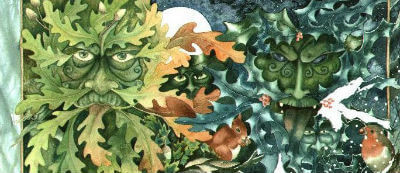A Symbol of Rebirth and More – The Green Man Myths and Legends

The idea of the Green Man means many things to many people. The name itself is really rather recent but the image or representation of a face surrounded by foliage has been found all over the world and throughout history in a variety of different cultures. He is also depicted with branches or vines coming out of his mouth, nostrils and other facial parts, sometimes bearing fruit or flowers.
The origins of the Green Man
Where the idea of this character comes from nobody really knows. We do know he's been a part of popular culture for thousands of years. His image can be found across a range of different cultures and faiths and has undergone a number of transformation, while surviving in much the same physical form to this day.
It is most widely accepted that he came about long before Christianity, as a nature spirit in the form of a man. There have been depictions of him found in artifacts found before the days of the Roman Empire. During the time of the Roman Empire evidence has been found both within the borders and outside as well as similar versions as far afield as India.
His most common association is with the Celts, in particular when they were in Britain and France. This is because of the large number of images that have been found in the regions.
What does the Green Man look like?
He is usually depicted with the face of a man, and not a young one but one more middle-aged or older. His face tends to appear surrounded by leaves, flowers and wines, as if he was born of the natural world. His image can be found with slight variations as to the vegetation that surrounds him. And as well as being surrounded by greenery, images have also been found with vines and leaves coming out of his ears, nose, eyes and mouth. There have also been images that make his face look like it is completely made of greenery.
What is the symbolism behind the Green Man?
Because of the way his image is portrayed it is believed that the Green Man was intended to be looked upon as a symbol of growth. It is meant to highlight man's relationship with nature and how our fates are inextricably linked. It is meant to symbolize how we are dependent on nature. Images of the Green Man have also been found on a number of graves which leads us to believe hie also has a powerful association with death and endings. However when his image has appeared on grave stones it appears as an empty skull rather than a flourishing figure.
